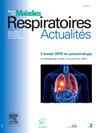免疫治疗在III期非分离cnpc中的位置
Q4 Medicine
引用次数: 0
摘要
不可切除的III期非小细胞肺癌的治疗目前是基于化疗和放疗的联合治疗,理想情况下是同时进行,然后用durvalumab治疗1年。尽管这一新的治疗标准说明了胸部放疗的技术进步和抗PD-L1在局部晚期疾病背景下的积极影响,但结果(5年无进展生存率为34%,5年总生存率为43%,没有PD-L1表达或EGFR突变的情况下没有生存获益)强调了进一步改善治疗的必要性。这可能包括优化免疫治疗与放化疗结合的策略,重新定义胸部放疗的参数以促进与免疫治疗的协同作用,以及将靶向治疗纳入肿瘤成瘾病例的治疗策略。本文章由计算机程序翻译,如有差异,请以英文原文为准。
Place de l'immunothérapie dans les CBNPC de stade III non résécables
Treatment of unresectable stage III non-small cell lung cancer is currently based on a combination of chemotherapy and radiotherapy, ideally concurrent, followed by consolidation with durvalumab administered for 1 year. Although this new therapeutic standard illustrates the technical progress of thoracic irradiation and the positive impact of anti-PD-L1 in the context of locally advanced disease, the results (progression-free survival of 34% at 5 years and overall survival of 43% at 5 years, no survival benefit in the absence of PD-L1 expression or in case of EGFR mutation) underline the need for further therapeutic improvement. This could involve optimizing strategies for combining immunotherapy with chemoradiotherapy, redefining the parameters of thoracic radiotherapy to promote synergy with immunotherapy, and integrating targeted therapies into the therapeutic strategy in cases of oncogenic addiction.
求助全文
通过发布文献求助,成功后即可免费获取论文全文。
去求助
来源期刊

Revue des Maladies Respiratoires Actualites
Medicine-Pulmonary and Respiratory Medicine
CiteScore
0.10
自引率
0.00%
发文量
671
 求助内容:
求助内容: 应助结果提醒方式:
应助结果提醒方式:


